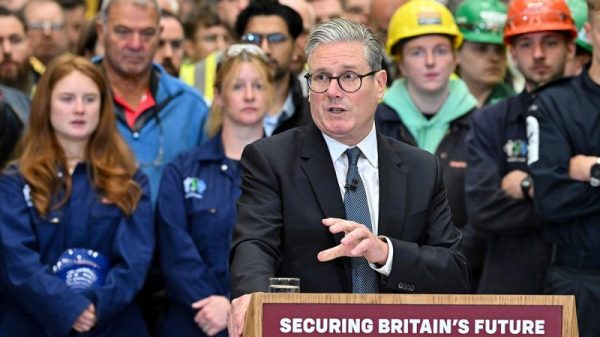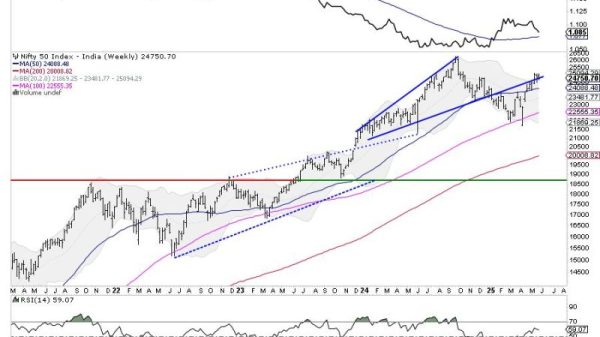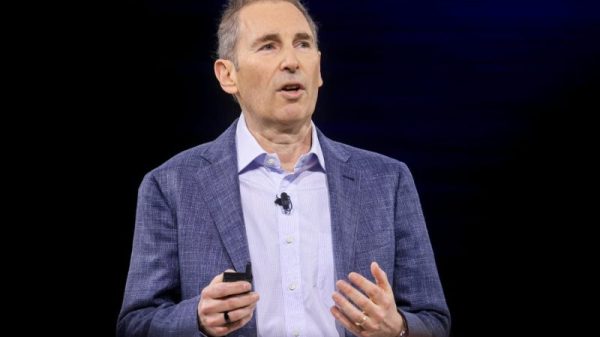Norbert Michel and Jerome Famularo
The Trump administration’s trade policy has taken a serious beating during the past few weeks, with good reason. Okay, for many good reasons, some of which we’ll expand on in this post.
But what’s encouraging is that more and more polls suggest Americans understand these trade policies are harmful. And one explanation could be that most Americans recognize that service jobs are good.
In other words, even though the Trump administration seems bent on “bringing back” manufacturing jobs to the United States, most Americans recognize that service sector jobs have already made America great.
You’d never guess it from all the political rhetoric, but service sector jobs have always been a major factor in America’s success.
As I explain in my new book, Crushing Capitalism, service jobs have accounted for a larger share of the US labor force than heavy industry since 1840, and a larger share than agriculture since the early 1900s. Similarly, the service sector’s share of total output exceeded heavy industry’s share during most of US history, with the only exception being a brief period around 1890.
Advocates of recent populist policies like to focus on the supposed demise of manufacturing that occurred after the 1970s, but that focus is misleading. Aside from the perpetual importance of the service sector, reliance on manufacturing jobs steadily declined long before the 1970s.
As Figure 1 shows, manufacturing jobs declined as a share of total employment since 1943, while the share of service jobs steadily increased, and the total number of jobs rose roughly five-fold (from about 30 million to almost 160 million). If the decline in manufacturing was so bad for so many Americans, they would not have experienced strong income growth. But they did, as has been documented by many researchers, despite the political spin.
As Figure 2 demonstrates, using a slightly different series that dates to the 1800s, the share of agriculture jobs displays an even steeper decline for an even longer period. From 1850 to about 1910, both the share of service jobs and goods-producing jobs increasingly took the place of declining agriculture jobs. (The decline inspired the Southern Agrarian movement, a group that tried to “to defend and restore the traditional Southern way of life against the rising tide of industrialism and the philosophy of progress.”)
As the graph shows, both the share of manufacturing jobs and agriculture jobs display nearly the same trend after 1970. Incidentally, this same heavier reliance on the service sector is seen in virtually all developed countries, including Germany, Japan, and even China.
Few of today’s populists bemoan the declining reliance on agriculture jobs, but the phenomenon is the same as what’s seen in manufacturing. In both cases, people can produce more than in the past with less workers. Blame technology, not trade—and don’t fall for the populist nostalgia trap.
It also turns out that those service jobs were not lower paying jobs, and that manufacturing jobs, in general, didn’t reliably provide higher income. (Even when they did pay more, they didn’t pay much more.)
As Figure 3 shows, average service wages (adjusted for inflation) per hour were higher than manufacturing wages in many years, even as early as the 1960s. Over the full period, wages in both sectors typically trended in the same direction, and the average for manufacturing was only slightly higher than for services—$18.82 versus $18.38.
These income differences also track with other data in the new book.
For instance, as of September 2019, average hourly earnings for nonsupervisory workers in manufacturing were lower than average earnings in 7 out of 10 service-sector categories created by the Bureau of Labor Statistics.
Manufacturing wages also tend to be inflated relative to those in service industries because the manufacturing sector’s workforce is older. For example, as of 2023, only 1 percent of manufacturing workers are under the age of 20, but a much larger share of workers in services is under age 20.
As Figure 4 shows, 14.5 percent of the workers are under 20 in leisure and hospitality, and 7 percent are under 20 in retailing. Given the typical age profile of a career, this larger share of young workers clearly places downward pressure on average income for service jobs at the industry level. Yet, the averages are still nearly the same.
It’s also the case that there is too much variation in the types of jobs within the overall manufacturing sector to say that manufacturing in general provides particularly well-paying jobs. For example, as of May 2023, the median annual wage for someone employed as an aircraft structure, surfaces, rigging, and systems assembler was $62,860. (Italics indicate official Labor Department job categories.) For comparison, the median annual wage was $51,030 for a computer-controlled machine tool operator, $42,000 for a foundry mold and coremaker, and $37,570 for a textile bleaching and dyeing machine operator/tender. (As Crushing Capitalism explains, these kinds of differences persisted long before 2023.)
Finally, it’s important to recognize that these service jobs are “good” along non-wage dimensions. For instance, the University of Michigan’s Health and Retirement Study shows that many of the service jobs created in the past few decades are less physically strenuous and more mentally demanding, a change that many people see as positive.
Unsurprisingly, the shift out of heavier industrial work also coincides with a steady decline in workplace injuries and deaths. The US Department of Labor estimates that approximately 3,848 employees were killed on the job in 1980, a total that fell to 2,588 by 2023 (excluding workplace transportation deaths, homicides and suicides). The rate of nonfatal workplace injuries and illnesses has also declined, from 11 per 100 workers in 1972 to 2.4 in 2023. Similarly, the rate of fatal workplace injuries per 100,000 workers has been falling, from 3.9 in 1980 to 1.6 in 2023. (Older data paint a similar long-term decline, but the data are not necessarily consistent with what we’ve reported here—check out Crushing Capitalism.)
There’s much more in the book, but this post exposes a few major flaws in the populists’ bleak economic narrative. The truth is that the service sector has always been a major driver of America’s success. For decades, even more so than manufacturing.
Trying to “bring back” manufacturing jobs, through harmful tariffs or other industrial policies, is destined to end badly for Americans. It makes about as much sense as trying to “bring back” all those farm jobs we had before the 1870s.



























